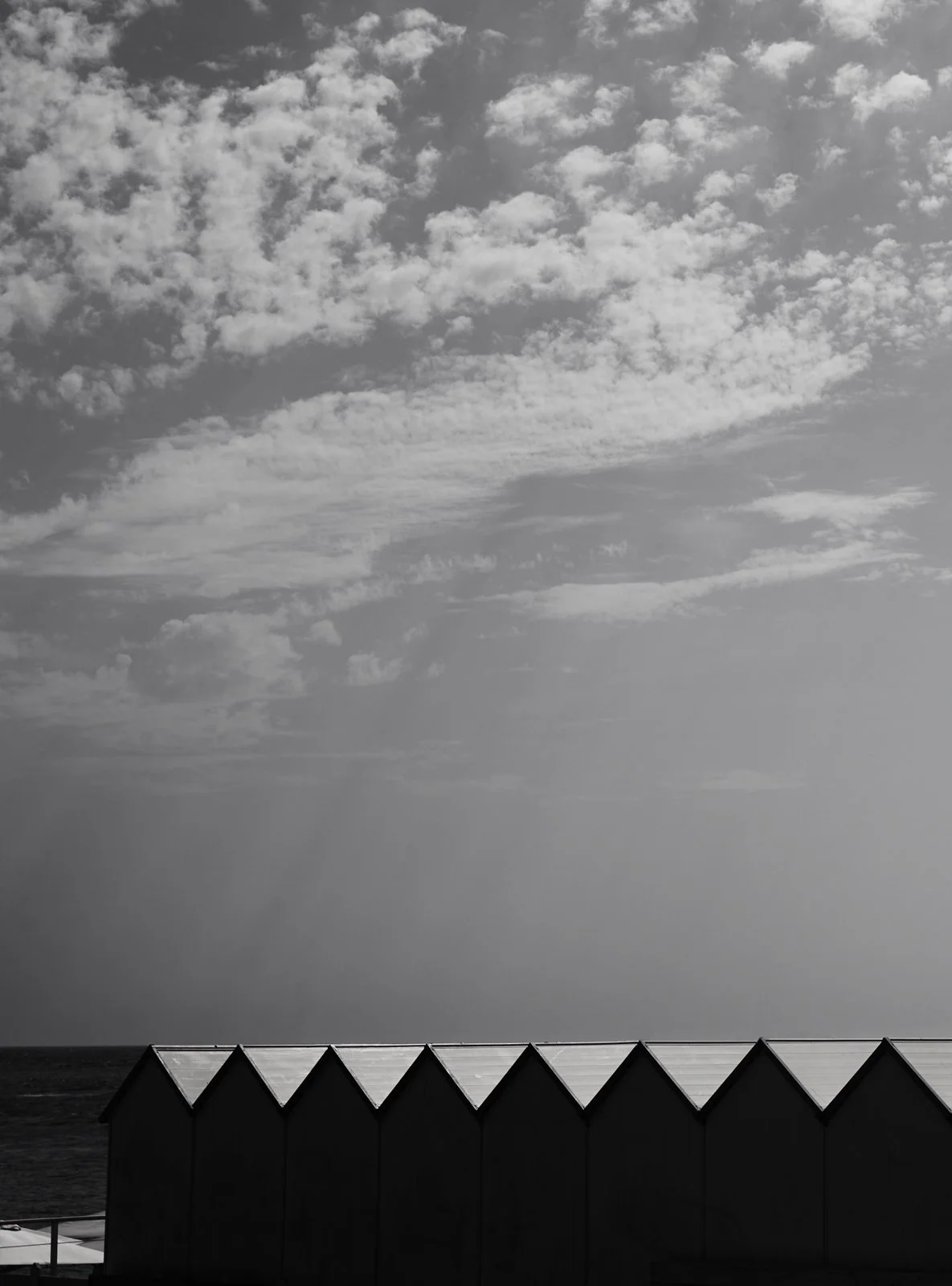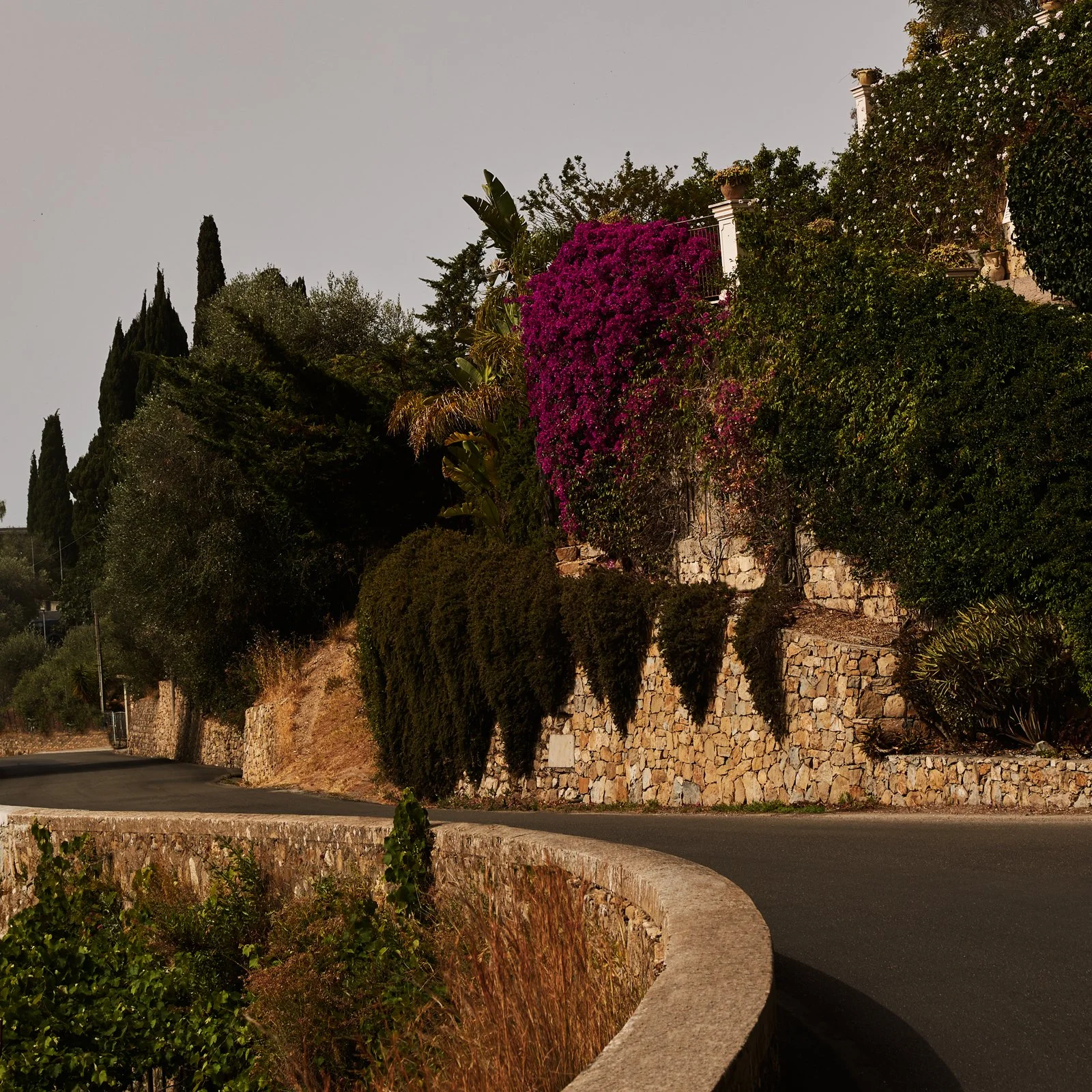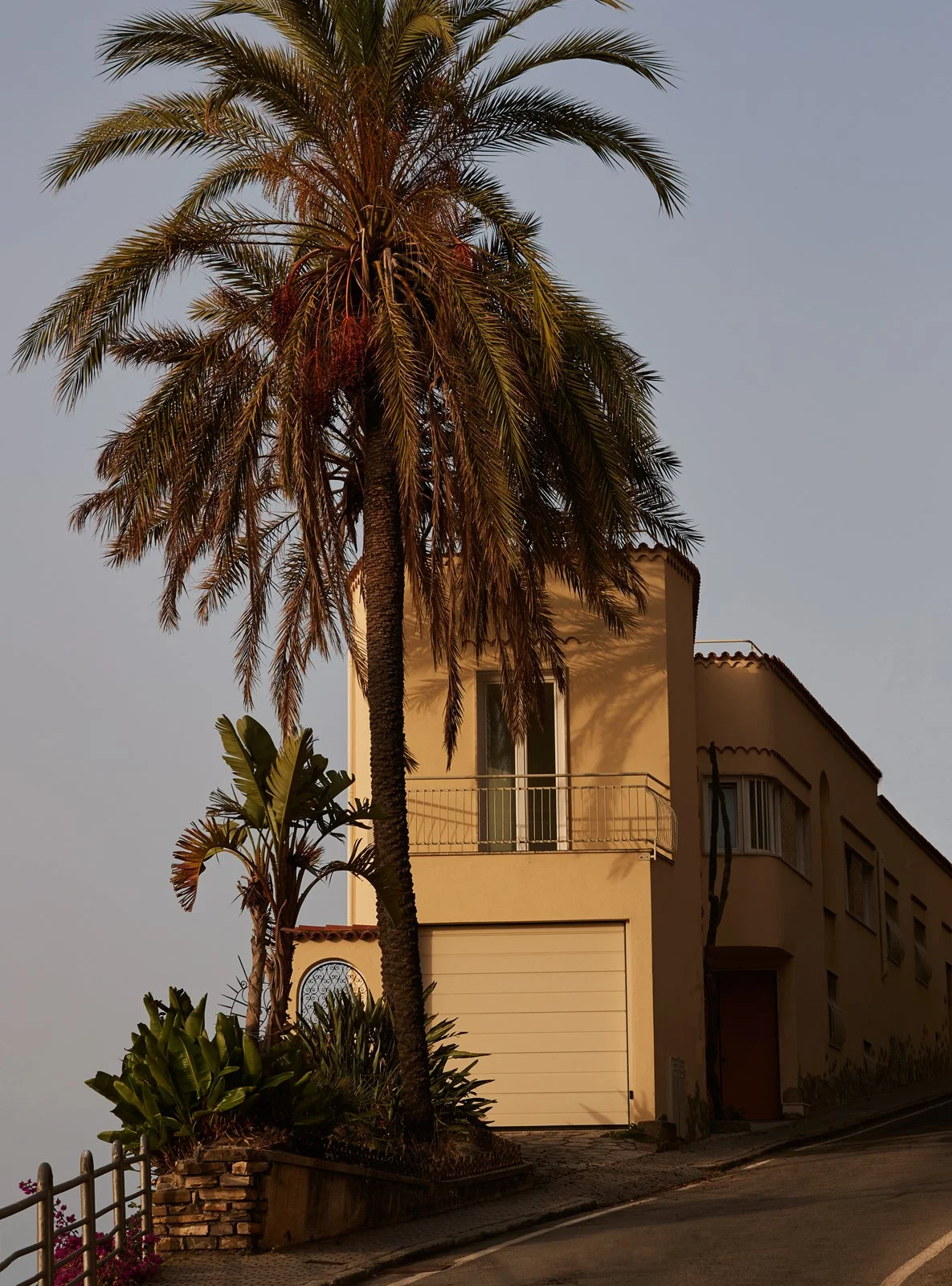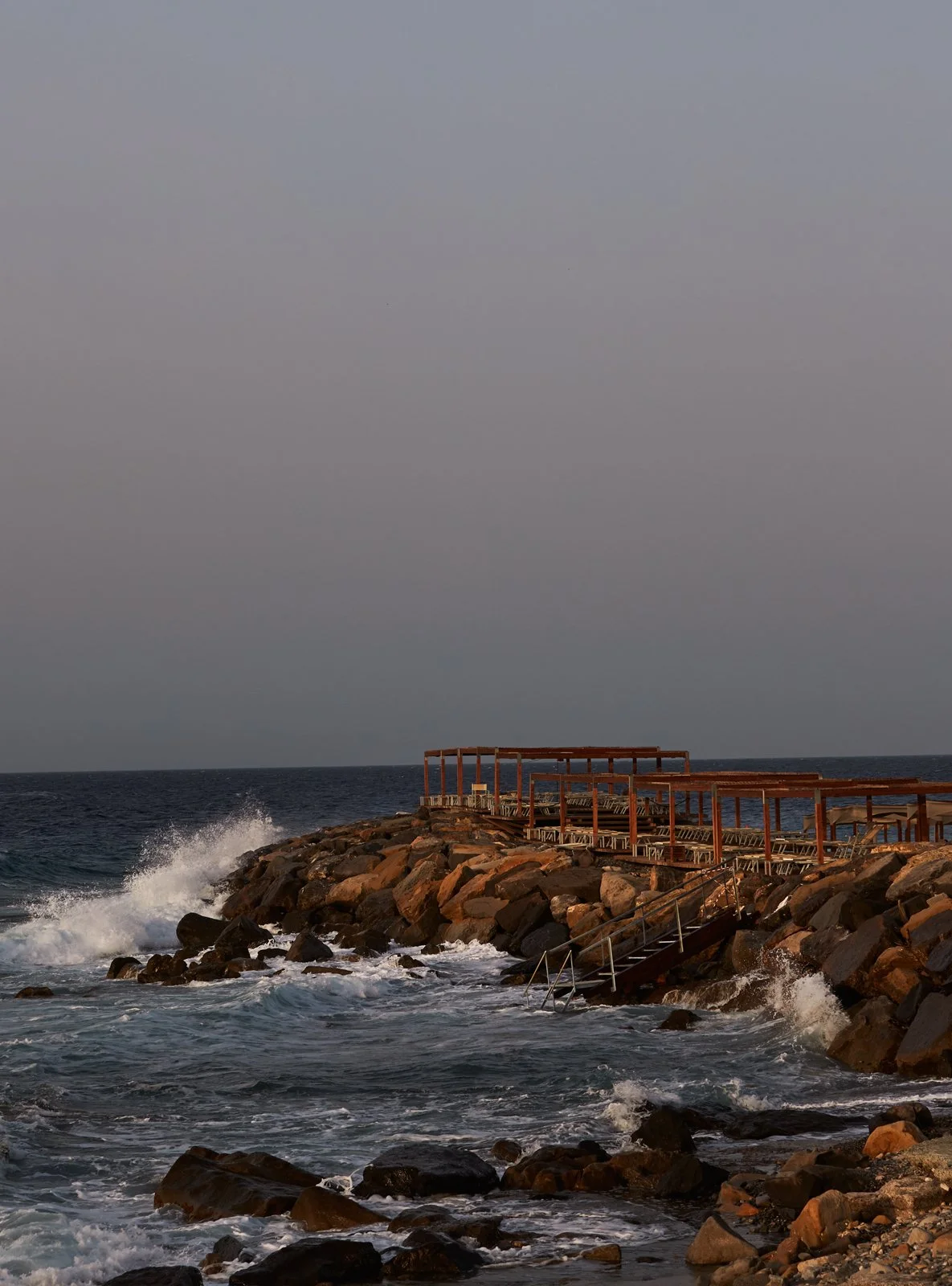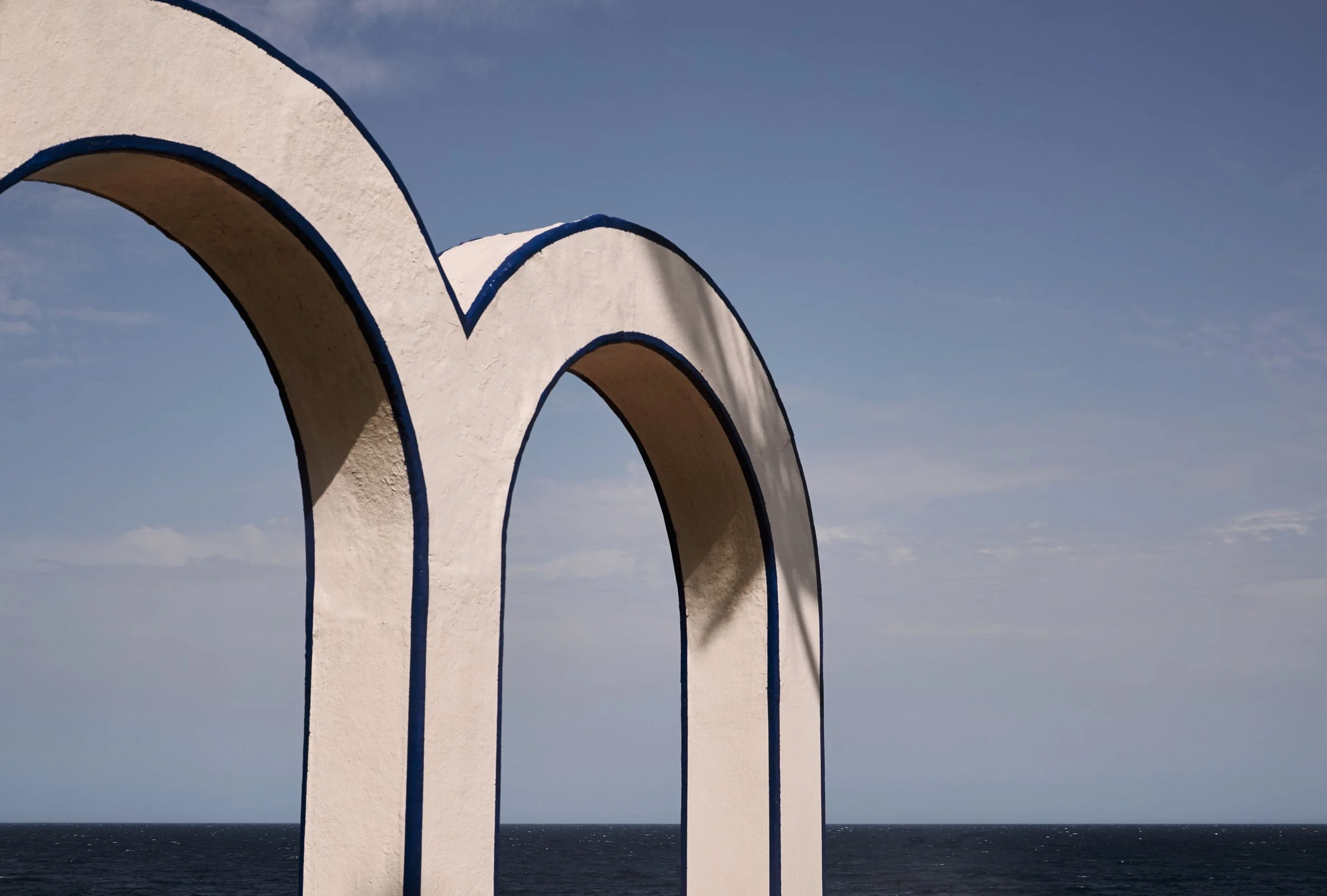GUIDE / BORDIGHERA / LA REINE DES PALMIERS
Driving eastbound along the Côte d’Azur, sooner or later one will arrive in Menton, last town on the French Riviera, known colloquially as “the pearl of France” and architecturally a mix of French and Italian building styles. After passing the small beach at the heart of the old town, as well as the subsequent long line of elegant residential buildings overlooking the ocean, one reaches the small Plage Hawï, mainly visited by locals. And only a few 100 metres after the beach – which is the most eastern place one can go swimming on Côte d’Azur – is the border to Italy. Crossing takes only a few moments, but almost immediately, the vibe changes.
In this region, the border has moved in various directions through the centuries, intertwining the two cultures, but there is still a discernible difference between the Italian Riviera and the Côte d’Azur, though it is difficult to explain exactly what the distinction is. It couldn’t only be the difference in food culture (though of course it helps). Eating in Italy is a completely different experience than in France. Food here is not only sensual, but simple: the ingredients are generally of such high quality that most dishes only require the combination of very few flavours. It could also be the difference in architecture and landscape: the French side tends to be mor elegant, while the Italian is more industrial, its many slopes covered with large greenhouses, where the many flowers that give the Italian Riviera its name – Riviera dei Fiori or Riviera of flowers – are grown.
Bordighera is not far from the border, less than half an hour from Menton, and the French coast is visible with the naked eye from the beach. The town includes the “Capo Sant’Ampello”, which protrudes into the sea, making Bordighera the southernmost commune of the region (on the same latitude as Tuscan Pisa). In the 11th century, a small church was built here, which still stands and is in use today. However, the industrial development has made an exception for Bordighera, and so the town has preserved its residential and sophisticated atmosphere, more similar to towns on the French side (though still decidedly Italian in character).
Capo Sant’Ampello
Similar to other towns in the same area, Bordighera benefits from a special microclimate. Because of its location between the Alps and the sea, it is protected from cold winds, making winters here warmer and more temperate. This affects the local fauna as well as the quality of air, and in the 19th century, this coastline was often visited both by botanists and those seeking to improve their health. However, it was also popular among British aristocracy and bourgeoisie, looking to avoid dreary English winters. In 1873, the opening of a railway station allowed for easy travelling between Bordighera and Paris, and ten years later, the Calais-Rome Express meant it took only 24 hours to get here from London. This revived the town, and remnants of this illustrious past can still be seen in the many majestic villas from this period that still line many of the streets of Bordighera. Many who visit the Ligurian Riviera for the first time are surprised to find how dominant the architectural style of the 19th century is here, but the reason is that in earlier times, the coastal waters were heavily plagued by pirates, and so most people would live in the hills, at a safe distance from the sea. The hillside Ligurian towns are therefore known for their ancient beauty, while the towns on the sea demonstrate more recent architectural styles.
Bagni Caranca/Ristorante Caranca
As pirate attacks grew increasingly rare, the strategic position of the area became clear to the different kingdoms in the area, and a century-long power struggle ensued. At times throughout history, Bordighera has been part of an independent state, while at other occasions, it has belonged to the “Palms Jurisdiction”, with Sanremo as its official capital. During the 16th and 17th centuries, what today is called “Bordighera Vecchia” or “Bordighera Alta” (in English, “old Bordighera” or “upper Bordighera”, as it sits on a small hill), a fortified small town, was built. Today, it is the oldest part of town, visited for its many excellent restaurants and view of the sea.
Bordighera Vecchia
Bordighera Vecchia
Perhaps the most imposing of all of Bordighera’s 19th century mansions is the former winter home of Queen of Italy Margherita of Savoy, wife of king Umberto I. Initially, she resided in nearby Villa Etelinda, but after a few years, she commissioned the building of Villa Regina Margherita, which would become her permanent winter home. A similar mansion, located a few blocks close to the sea, is Villa Garnier, built in 1872 by architect Charles Garnier (otherwise best known for designing the Garnier Opera in Paris and the Opéra de Monte-Carlo). He found his way to Bordighera thanks to his wife, whose family was from Menton, where the couple sought refuge during France’s war with Prussia. The outbreak of this war also forced botanist Ludwig Winter to leave Paris. After some travelling and odd jobs in the south of France, he found himself working with Thomas Hanbury to plan the park of Palazzo Orengo, situated between Bordighera and Ventimiglia and today considered one of the finest parks of Italy. Another famous visitor was Claude Monet, who spent three months here in 1884, which led to a series of paintings of the Ligurian landscape and sea. He had visited the town one year earlier, together with Renoir. This time, he travelled alone, and his letters home were filled with detailed descriptions of the British colony that lived here each winter. Because of the British presence, there is still today a British private library, an Anglican Church and Italy’s first tennis courts.
Villa Garnier
Villa Regina Margherita
¨The bourgeois atmosphere of the Gilded Age is still noticeable in the grand boulevards (of which Corso Italia is the most famous), botanical gardens and elegant boardwalk.¨
Still today, the silhouettes of the lavish 19th century buildings define the character of the town. The bourgeois atmosphere of the Gilded Age is still noticeable in the grand boulevards (of which Corso Italia is the most famous), botanical gardens and elegant boardwalk. Since 1947, the latter is known as Lungomare Argentina, to commemorate Eva Peron’s visit. With its 2,300 metres, it the longest promenade on the Riviera.
Lungomare Argentina
Lungomare Argentina
Lungomare Argentina
Bordighera was the first town in Europe to grow date palms, and its citizens still today have the exclusive right to provide the Vatican with palm fronds for Easter celebrations.¨
Lungomare Argentina
Though technically located in Italy, Bordighera was included in Stéphen Liégard’s 1887 book “La Côte d’Azur”, which became a guide to the increasing numbers of visitors around the turn of the last century, drawn to the south of France for its mild climate and beautiful natural scenery. In the book, Liégard named the town “La reine des palmiers” (in English, “the Queen of Palm Trees”), a name it has since been associated with. The reason behind the name was that Bordighera was the first town in Europe to grow date palms, and its citizens still today have the exclusive right to provide the Vatican with palm fronds for Easter celebrations.
To stay
35 rooms and a swimming pool, close to both the beach and the old town.
Via Romana, 70
18012 Bordighera
Italy
Located more or less on the beach, some of its rooms with balconies face the water.
Lungomare Argentina, 16-18
18012 Bordighera
Italy
Villa Garnier
The room rates in this majestic villa include breakfast and dinner.
Via Charles Garnier, 11
18012 Bordighera
Italy
To eat
Beach club with nice restaurant.
Via Arziglia, 20
18012 Bordighera
Italy
Bagni Caranca/Ristorante Caranca
Relaxing beach club close to the city centre.
Lungomare Argentina 1
18012 Bordighera
Italy
+390184261292

